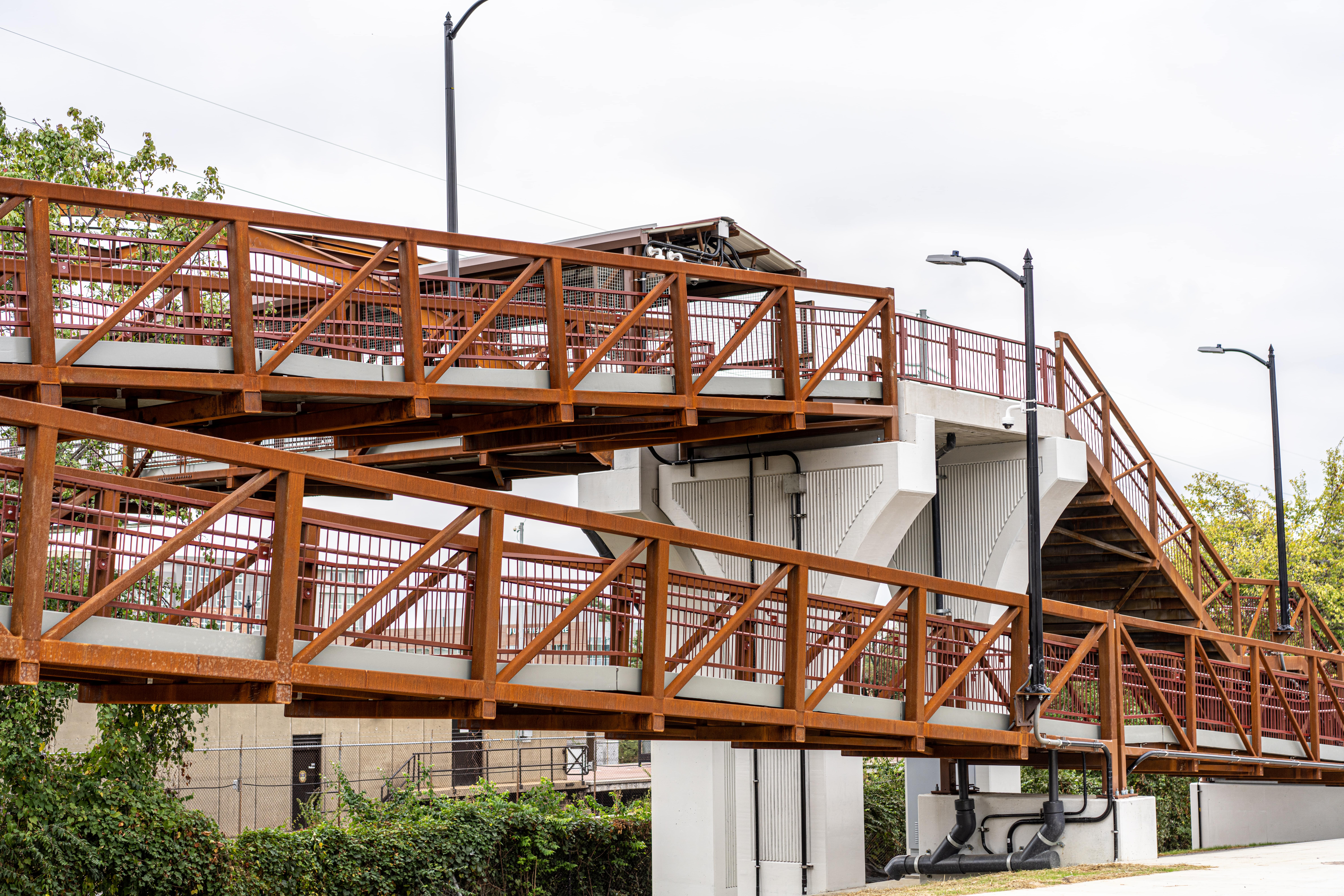
From utilities to infrastructure, material choice is critical to shaping the project outcome and longevity. Public project engineers are increasingly choosing Fiber Reinforced Polymer (FRP) instead of traditional materials. FRP’s unique combination of qualities translates to safety at a competitive cost, both essential considerations for government-funded projects. FRP is backed by codes and standards developed and tested by industry professionals, and it is inherently corrosion-resistant and lightweight, meaning shorter, infrequent installations. This combination of durability, efficiency and versatility make FRP ideal for public works projects.
FRP is Backed by Industry Standards
Adherence to industry codes and standards is paramount for safety in any project – especially government-funded ones. When FRP was first pioneered over 50 years ago, engineers were hesitant to consider it a serious alternative material for utility poles, bridge decking and more. At the time, FRP did not possess the same codes and standards information as conventional materials like wood, steel and concrete.
But FRP industry professionals knew that this material could bring significant benefits to public works projects. They worked diligently with certifying organizations like AASHTO, ASTM, UL and ANSI (to name a few) to develop similar codes and standards for FRP that exist for traditional materials. Now, structural and civil engineers can specify FRP with equal confidence.
Engineers can specify FRP products – especially by CCG – knowing it is safe to design with and that the product will perform as engineered. We believe wholeheartedly that codes and standards protect everyone: the public, owners, manufacturers and intermediaries throughout the entire design, manufacture, installation and ownership processes.
CCG’s Industry Professionals at Work
CCG technical staff have and continue to play a major role in assisting with the development of codes and standards. Staff members sit on and, in some cases, chair advisory committees responsible for developing design and testing standards. We realized early on that, for an industry to excel, design codes, testing standards and codes of standard practice must be developed for owners, specifiers, engineers, fabricators and installers. CCG has become so accustomed to aiding in the development of codes and standards that our technical staff trains members of the Army Corps of Engineers® and other groups to understand the facts about FRP.
We hire respected, experienced engineers who can help us continue to deliver on our product’s promises and more. Unlike companies that fund research to get their way and push approvals through, CCG employs engineers who are respected members of their field and serve in professional organizations. On most occasions, professionals from many industries are part of the team. If we are working on an AASHTO standard, practicing engineers, academics and manufacturers are all present with the common goal of developing standards.
FRP’s Corrosion Resistance
The United States’ deteriorating infrastructure is testament to an unfortunate reality of public works projects: routine maintenance and repairs aren’t usually in the budget, and replacements often happen only after something breaks. Traditional materials like steel, concrete and wood are susceptible to corrosion and rot. A treated wood utility pole, for example, may last a few decades, but the banning of preservatives like Penta, plus animal damage and other natural impacts, can significantly reduce service life. Concrete bridge decking, as another example, is sturdy and long-lasting, but the metal rebar inside it can corrode and deteriorate the concrete, speeding the need for replacement.
Degraded infrastructural materials present multiple threats to public safety:
- Damaged utility poles can come down, causing outages, damaging property or blocking roads—or even worse, causing electrocution deaths.
- Corroded sheet piles and other waterfront infrastructure can leach rust and other byproducts into the water.
- Broken, warped or rotted pedestrian bridge decking can damage bicycle tires, create trip hazards for pedestrians and could even make the bridge unsafe to cross.
FRP is corrosion-resistant by nature. As a manmade, polymer-based material, it is nonreactive to salts and water like metal, wood or steel-reinforced concrete. Because of this, FRP infrastructural materials often have a longer lifespan with significantly less maintenance and no environmentally unfriendly chemicals. This ensures that taxpayers' investments yield long-term benefits.
FRP’s Lightweight Advantage
Traditional infrastructural materials are heavy and cumbersome and sometimes must be fabricated on-site. To keep workers safe, more laborers are needed, and they must work more slowly. Specialized equipment is often required, which adds time and cost. All this strains the public good, as longer projects cost more and lengthen inconvenience—which also results in more time for accidents to occur.
FRP is orders of magnitude lighter weight than concrete and steel. This lightweight composition dramatically accelerates installation. More FRP material can be transported to a site in fewer loads due to this lighter weight. FRP infrastructural materials are prefabricated and easy to site-assemble without special machinery or extra workers, which translates into reduced labor costs. And a faster, simpler installation process means shorter disruptions to public services during construction. In one example, it takes on average 27 days for standard concrete to reach design strength. Contrast this with the delivery of prefabricated decks, and time is significantly reduced. Reduced installation time equates to fewer accidents, less public inconvenience, less labor and many times less overall cost.
The Proof is in the Projects
Perhaps no customer story better exemplifies the way FRP protects public safety than the Canarsie Tunnel in New York City. Hurricane Sandy wrought major destruction on the Big Apple in 2012, including flooded subway tunnels. The Metropolitan Transportation Agency (MTA) needed to repair 3,445 feet of the 7,953-foot-long Canarsie Tunnel, including tracks, signals, switches, power, signal and communication cables, lighting, cable ducts and bench walls. Estimates placed the bill at nearly half a billion dollars, and both the tunnels and the L-Train would need to close for 15 to 18 months.
This wasn’t a viable option for the 400,000 New Yorkers who depend on this public transportation each day. So, the MTA looked for alternatives to traditional materials. The MTA partnered with CCG to design a first-of-its-kind application of FRP shrouds to line the subway tunnel walls. Choosing FRP meant faster, simpler installation: the project was done months ahead of schedule and for $100 million less. FRP is a manmade material that can be molded or pultruded to order. This design flexibility and performance led to custom-molded encasements for the tunnel’s damaged sections, rather than demolishing and rebuilding them.
FRP protected the New York public through fiscal responsibility, by restoring essential transportation faster and through its material properties. Because it is manmade, FRP can contain additives without compromising performance. For the Canarsie project, phenolic resin was added to meet non-combustibility, fire, smoke and toxicity requirements. And because FRP is naturally corrosion resistant, the tunnel shrouds are not susceptible to degradation from moisture or even flooding like that of autumn 2023.
Empowering Public Projects with FRP
As the demands on public projects continue to grow, the choice of materials becomes an increasingly pivotal decision. FRP is emerging as the superior choice for government initiatives, thanks to its comprehensive testing and compliance with industry standards, natural corrosion resistance and installation efficiency. The result is a public project that costs less over the lifetime, lasts many decades and is durable without additional weight.
CCG has a proven record of successful public works partnerships powered by FRP. Our expertise and dedication to quality ensure that all projects, especially those backed by public money, get the full potential of this material for many decades. Contact us today to discover how FRP can make the most of your public project.
